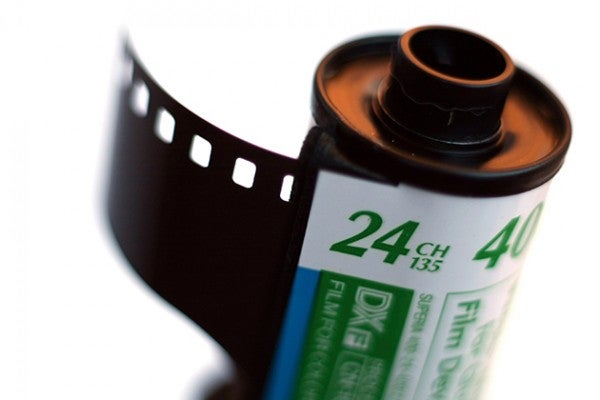Nowadays, analogue is used to describe ‘old school’ silver halide photography, yet up close, it’s pure digital
One of the odd things about terminology is the way it sometimes flips around. Over the past dozen years or so, ‘digital’ photography has become ubiquitous, and the previous type of photography – using silver halide emulsions as the ‘sensor’ – is called ‘analogue’ to differentiate between the two. In fact, ‘digital’ photography is, in some ways, more analogue than silver halide.
Digital photography measures the amount of light (an ‘analogue’ measurement) in each of an array of regularly shaped pixels. Silver halide photography depends on grains, which are either darkened or not, according to whether photons have hit them.
A grain can only be black (reduced to silver) or transparent, so this is an on-off way of building an image.
Both film and silicon sensors make use of the photoelectric effect, whereby a photon incident on an atom releases one of the electrons (If we still used the old Bohr model, which viewed an atom as a tiny solar system, one can imagine the electron being ‘knocked out of its orbit’ by the energy of the photon, and being free to wander away from the atom).
In the case of a silicon sensor, these free atoms are induced to travel to an electrode forming a charge, which is measured by the electronic circuitry in the camera. In the case of silver halide, the electron takes part in a chemical reaction called ‘reduction’ – any chemical reaction in which electrons are gained.
With silver halide emulsion, the silver halide molecule consists of a silver ion, which is positively charged – meaning it is lacking a negatively charged electron – and a halide ion (fluorine, chlorine, bromine or iodine) which, having an additional electron, is negatively charged. Coupled together, they make a stable molecule of salt.
However, a free electron can bind with the silver ion, making up the deficit and leaving an atom of silver metal. The halide ion is left alone, creating what is called a ‘hole’. The tiny concentrations of silver form what is called a ‘latent image’; the image is there but invisible – it needs to be ‘developed’. Photographic developer is also a reducing agent,but one that is carefully selected to be weak enough so it only reduces silver halide grains that already have a latent image (silver metal atoms) present. The result of this chemical development is that grains with a latent image become completely converted to opaque silver metal.
After development, unexposed silver halide crystals could still form a latent image if exposed to light, so they are washed away using another chemical called a ‘fixer’. This explains why film is truly digital – each grain can be dark or transparent, and the quantity of dark ones dictates the density of the image.
A ‘fast film’ in general simply had larger grains, so that each speck of the latent image developed resulted in a higher density, due to the larger size of the resulting grain.
Bob Newman is currently Professor of Computer Science at the University of Wolverhampton. He has been working with the design and development of high-technology equipment for 35 years and two of his products have won innovation awards. Bob is also a camera nut and a keen amateur photographer.





